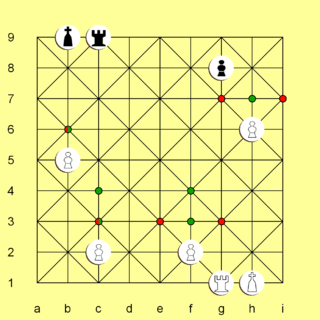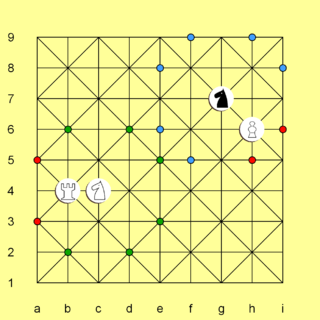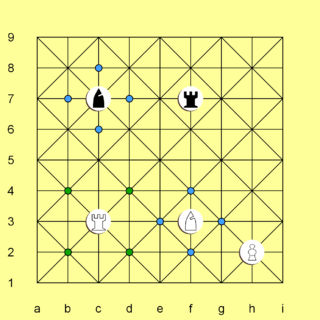
- Chess World Cup
- FIDE Grand Prix
- Olympiad
- World Championship
- List of strong tournaments
- List of world championships

- Checkmate patterns
- Chess openings
- Chess strategy
- Chess tactics
- Chess theory
- Endgames
- Pawn structure
- Problems/Compositions












 Chesquerque gameboard and starting position. In the diagram, archbishops are represented by knight and bishop combined.
Chesquerque gameboard and starting position. In the diagram, archbishops are represented by knight and bishop combined.Chesquerque is a chess variant invented by George R. Dekle, Sr. in 1986. The game is played on a board equaling four Alquerque boards combined, and like Alquerque, pieces move along marked lines (9x9) to the points of intersection (81 points). All the standard chess pieces are present, plus one additional pawn and one archbishop fairy piece per side. The pieces move in ways specially adapted to the Alquerque-gridded board.
Chesquerque was included in World Game Review No. 10 edited by Michael Keller.
The illustration shows the starting setup. White moves first and the object is checkmate. Other standard chess conventions apply as well, but piece moves are specially adapted to the Alquerque-gridded board. Pieces move only along marked lines, and rest on the points of intersection.
 The white pawn on h6 can move one step straight forward (green dot), or capture diagonally forward (red dots). The pawn on b5 has no diagonal options; it moves and captures one step forward (green-red dot). The same prevails for White's pawns on f2 and c2 respectively; however, those pawns have initial two-step options (furthest green dots). If the black pawn on g8 advances, White can capture it, for example: 1... g6 2. hxg7 e.p. In the diagram, White has castled kingside (0-0); Black has castled queenside (0-0-0).
The white pawn on h6 can move one step straight forward (green dot), or capture diagonally forward (red dots). The pawn on b5 has no diagonal options; it moves and captures one step forward (green-red dot). The same prevails for White's pawns on f2 and c2 respectively; however, those pawns have initial two-step options (furthest green dots). If the black pawn on g8 advances, White can capture it, for example: 1... g6 2. hxg7 e.p. In the diagram, White has castled kingside (0-0); Black has castled queenside (0-0-0).

